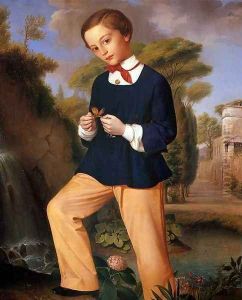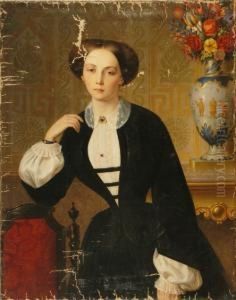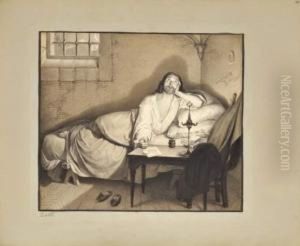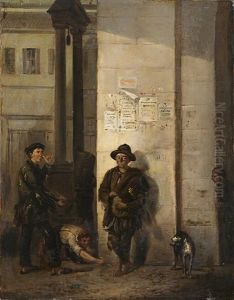Carlo Zatti Paintings
Carlo Zatti was an Italian painter, born in 1863 in the province of Brescia, Lombardy, a region known for its rich artistic heritage. Zatti's early life was immersed in the vibrant cultural milieu of late 19th-century Italy, a period marked by significant political and social changes that also profoundly influenced the arts. He developed an interest in painting from a young age, nurtured by the rich traditions of Italian art that surrounded him.
Zatti's artistic journey began in earnest when he enrolled at the Brera Academy in Milan, one of Italy's most prestigious art schools. Here, he was exposed to the works of the great Italian masters and trained under the guidance of established painters of the time. His style evolved over the years, showing influences from Romanticism and later, elements of Impressionism, reflecting the shifting artistic trends of the era.
Throughout his career, Carlo Zatti dedicated himself to capturing the essence of Italian life and landscapes. His works often depicted serene rural scenes, bustling marketplaces, and the picturesque countryside of Lombardy and other Italian regions. Zatti's ability to imbue his paintings with a sense of light and atmosphere was particularly noted, earning him accolades and recognition among his contemporaries.
Despite his talents, Carlo Zatti remained relatively obscure outside of Italy. His dedication to the Italian landscape and way of life, though it endeared him to local audiences, perhaps limited his international exposure. Nevertheless, within Italy, his contributions to the art world were appreciated, and he participated in several exhibitions, including the prestigious Venice Biennale.
Zatti's later years saw him continuing to paint and exhibit, though he gradually withdrew from the public eye. He passed away in 1934, leaving behind a body of work that, while not widely known internationally, is cherished for its heartfelt portrayal of Italian life and beauty. Today, Carlo Zatti's paintings can be found in various Italian museums and private collections, regarded as valuable examples of late 19th and early 20th-century Italian art.



